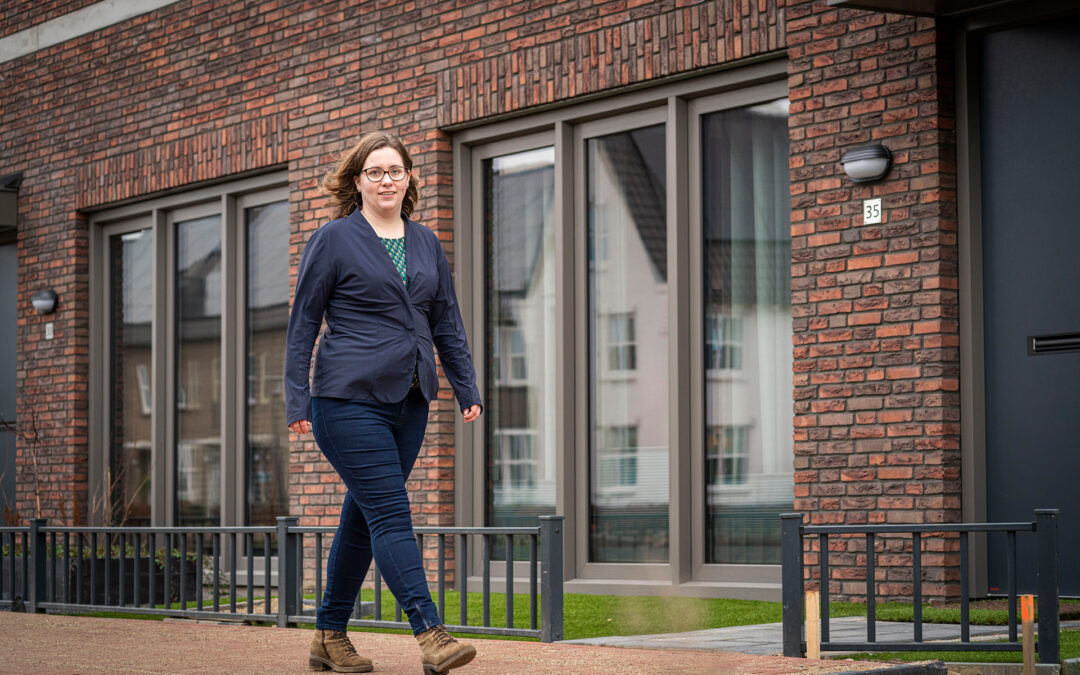High energy prices
Our house is heated by district heating. This way of heating is getting more common in the Netherlands. There is no connection with gas in our house. Although wood is used to heat our house, the prices in 2022 went up.
For me, the energy prices are the reason for this blog. It is an investigation if a heat pump is a good investment in the Netherlands.
Energy transition
When was the first time you saw an electrical bus riding through Eindhoven? For me, about 5 years ago. I still lived in a flat near the bus lane. And, during the day, we always heard the bus. The first time I saw one, I didn’t hear the bus driving. That was a real relief.
Electrical cars, buses, solar panels and energy-saving washing machines. This is all part of the energy transition that is taking place.
In the Netherlands, the government does give subsidies and provides advice. The goal is to reduce the emission of CO2. Instead of using gas for heating, electrical heating is seen as a solution to reduce the emission.
When is your house suitable?
My favourite programs to watch on TV? Now it is the series on Downtown Abby. Marvellous scenery with castles and interiors. And, I always wonder how you can heat such big houses sustainably.
Most houses in the Netherlands are suitable for heating with a heat pump.
Is your house built after 2010? Then your house in the Netherlands is suitable for an all-electric heat pump.
Is your house built between 2000-2010? Your house is most likely suitable for a hybrid or all-electric heat pump.
Before 2000? Most likely, your house is suitable for a hybrid heat pump. Although there are exceptions. Is your house hardly insulated at all? First, start insulating. Are you not sure if your house is suitable? You can test it by controlling the water temperature to 70 degrees Celsius during the whole of the winter. You set the temperature in the hot water boiler. If the result of this test is that you feel comfortable all winter, your house is suitable.
Another thing to think about is space. For a heat pump, you need to have space on the inside and outside your house. Inside, space for a unit the size of a big refrigerator. Outside, space for a unit the size of an air-conditioning unit.
How does a heat pump work?
The pump contains 5 important parts:
1. evaporator
2. compressor
3. condenser
4. expansion valve
5. coolant
In the air, there is always thermic energy. The coolant is always colder than the air. By running through pipes, the coolant absorbs the energy from the air.
The coolant is compressed, and the temperature of the coolant rises.
After compression of the coolant, the heat is transferred to the pipes of the house by using a condenser.
When the heat is absorbed through your house or warm water, the coolant will be run throughout the expansion valve. Which reduces the temperature of the coolant. It is like spraying with a spray can. The spray can feel cooler when you have sprayed. And the cycle begins again.
For running this process, electricity is needed.
There are several kinds of pumps in the market.
1. Electrical heat pump
An all electric heat pump reduces the CO2 emissions of heating with 30-45%.
Resource: Milieucentraal.
Advantages
– No gas connection is required (saves you up to €260.00 a year).
– You reduce the amount of CO2 emission for heating your house, without losing comfort.
– Heating your house is less expensive than heating on gas. (Around €200,00)
– Sometimes it is possible to cool your house in the summer with the same equipment.
Disadvantages
– Electrical heat pumps can be expensive.
– You require a very well insulated house.
– You require space for a water barrel, which is the size of a large refrigerator.
– And, there must be space on the outside of your house to place an outdoor unit.
– The outdoor unit can give noise.
– If you have a gas stove, this needs to be replaced by an electrical one.
Other things to mention:
A combination between an all-electric heat pump and solar panels are seen as a future-proof combination. However, the sun is not shining in the winter so much, that you can cover the usage of electricity for the pump.
Also, there are adjustments to make in the fuse box, so there is extra electricity capacity.
2. Hybrid heat pump
This one is very popular nowadays. The system uses the hot water boiler as a backup. For example: when it is freezing outside, or you take a long shower. The hot water boiler will supply the extra heat. But when it is possible, the electrical heat pump will take over.
The prices for this system start from €6,500-€14,000. However, the subsidy is available, and you will have a return back from around 30% of the investment.
To do so, you require low-temperature heating. This means that you also require radiators suited for this.
Pros:
– This way of heating is also possible in your house when it has more basic insulation.
– You will save a lot on your energy costs.
– Always enough capacity to heat your house.
– Always a backup system to heat.
Cons:
– You have two systems in your house, this need to be very well regulated.
– A gas connection.
– The water barrel will take some space.
– Maintenance cost are higher.
3. Geothermal heat pump
Are you building a new house and have a large garden? Then I recommend this solution.
For using geothermal heat, a few pipes are drilled 50-100 m into the ground. Good to know is that you need to inform the municipality.
This system is even more efficient than an electric heat pump.
Advantages
– This system is used also to cool your house in the summer. So no air-conditioning is required.
– No gas connection is required.
– Very economical way to heat your house. You save up to €600.00 a year on heating.
Things to keep in mind
– This system cost €8,500-€20,000.
– To place a geothermal heat pump, you need to have enough space in your garden.
– After 15–20 years, the system needs replacement.
– Installing this system requires an expert.
Which capacity do you need?
In short: just enough. Then your house is heated in the most efficient way and still comfortable.
First, you need to know how much gas you use on a yearly basis. You can check this on your bill. Second, are you thinking about taking more energy-saving measures? If so, take the measures first. As they have a positive impact on your use of energy use.
Subsidies for a heat pump in the Netherlands
In the Netherlands, you can get a subsidy for every type of heat pump. The subsidy (ISDE) in 2024 is around 20-30% of the investment. However, this is only the case for heat pumps with energy label A+ or higher. There is an extra subsidy available for heat pumps with label A+++ or higher. Every year, the rules are becoming stricter. So, check the website of the goverment.
Is it a good investment?
Every situation is different, and yes, in many cases a heat pump can be a very good investment.
In normal conditions, a heat pump needs replacement after 15-20 years. In the meantime, also maintenance needs to take place. And, you don’t use (so much) gas, but more electricity.
In some cases, it would take a long time before you earn the investment back. But that is, of course, also dependent on the efficiency (Seasonal Coefficient Of Performance (SCOP)) of the heat pump and the prices of gas and electricity in the future. And, when your hot water boiler requires replacement.
When you built your own new house in the Netherlands, without doubt, a heat pump is an excellent investment.
Our case
In our house, we have district heating. The prices are comparable with gas. In 2021, we used 30 GJ gas, which cost €111.00 a month. This year, with the same use, we need to pay €175.00 a month.
When I calculate three scenarios (one with €111.00, one with €135.00 and with €175.00 a month). Including the investment of a heat pump, extra use of electricity, subsidies and maintenance of €300.00 a year, still a heat pump is less expensive than district heating. This is over the life span of 15 years. The return on investment is in our case 10–15 years.
Conclusion
A heat pump is worth always considering, especially when you need to replace your hot water boiler. And, with a subsidy and the energy prices in 2022 it is more interesting than ever before.
If you want help with searching a company or checking a quotation, just contact me, by clicking this link.




Hi,
I would like to install heat pump ast my house . could you please send me the quotes for this
Settle Down Support is not a supplier, however we can help you find a good supplier.
Need help with Heat pump installation
Hello,
I read your post about heat pump. Do you have any supplier to suggest, in Amsterdam and sorroundings?
Hello Andrea,
Usually, we seek the company which suits the client. That’s different for every client. Please feel free to book an online meeting or send an e-mail to info @ settledownsupport.nl if you want to know more. When you want to search yourself, look for a certified supplier with experience in heat pumps.
Have a nice day,
Marijke